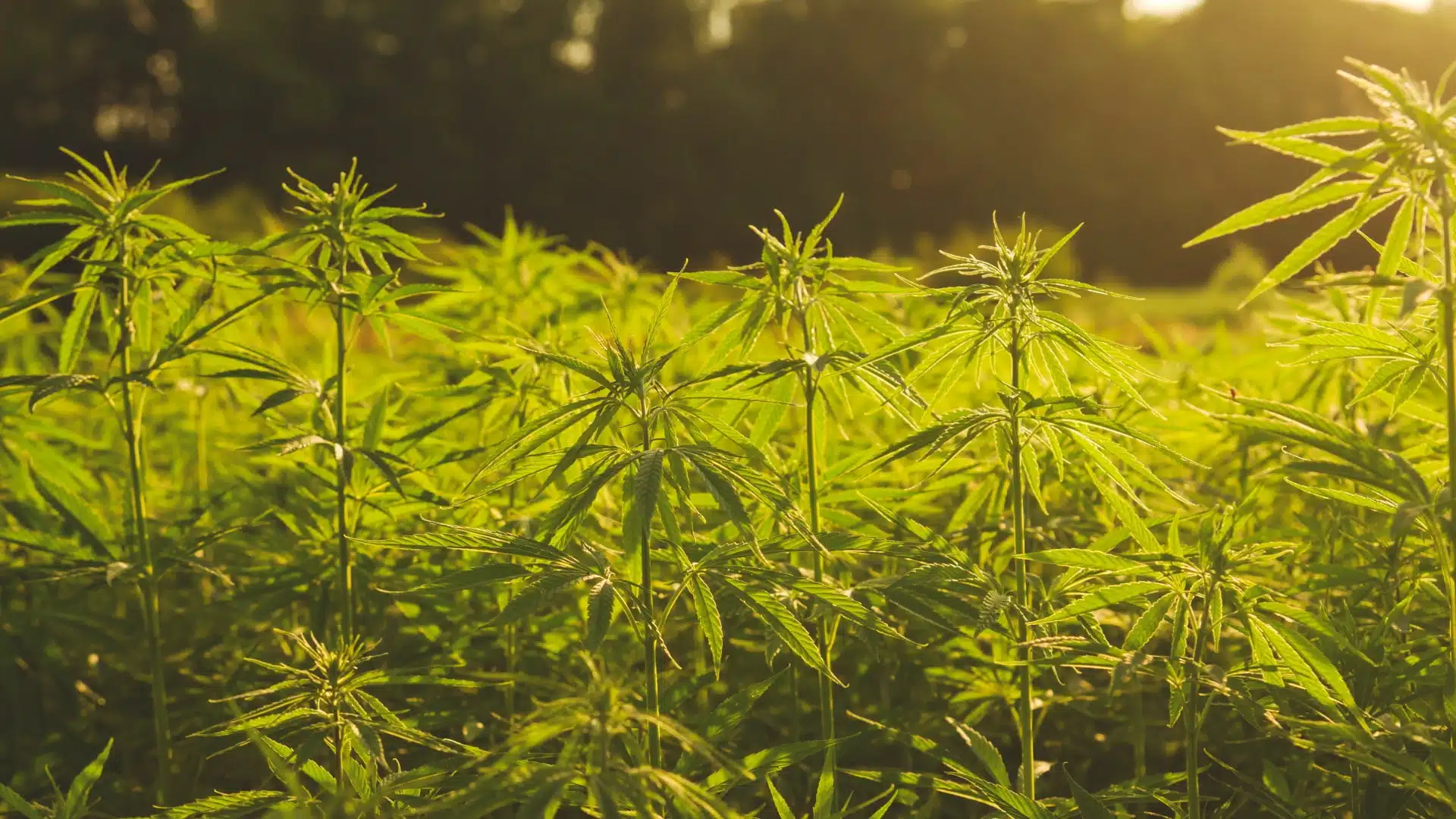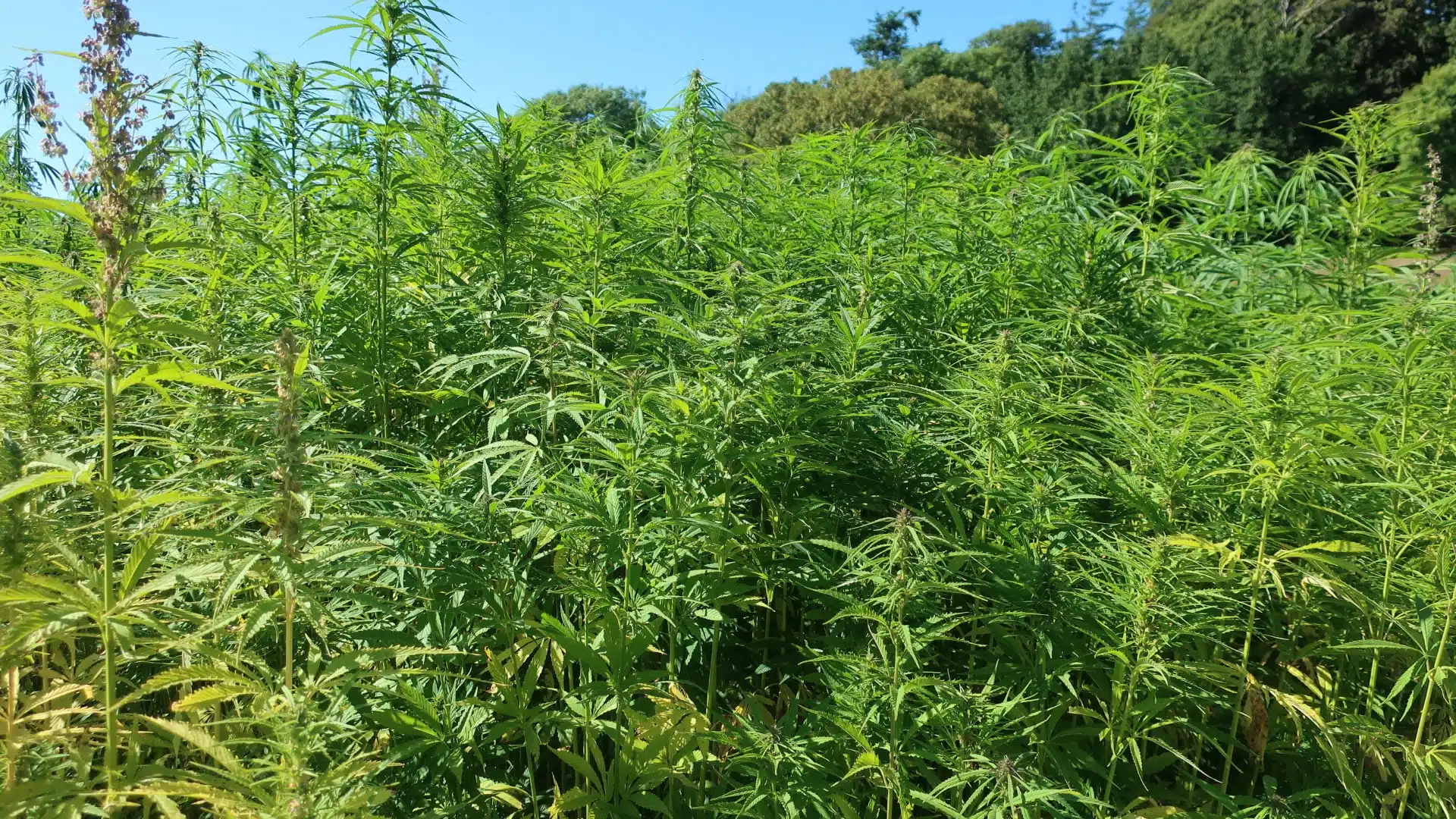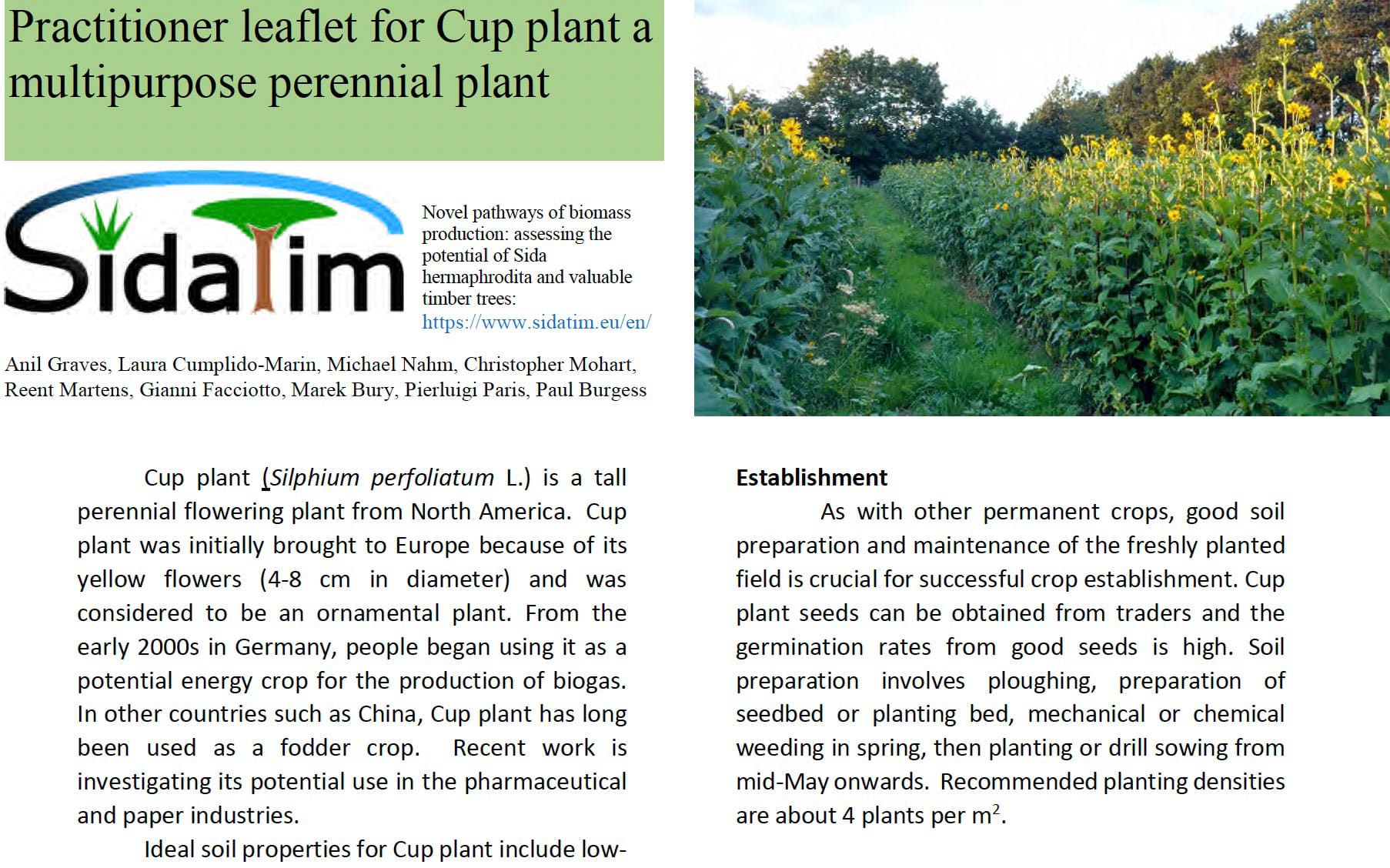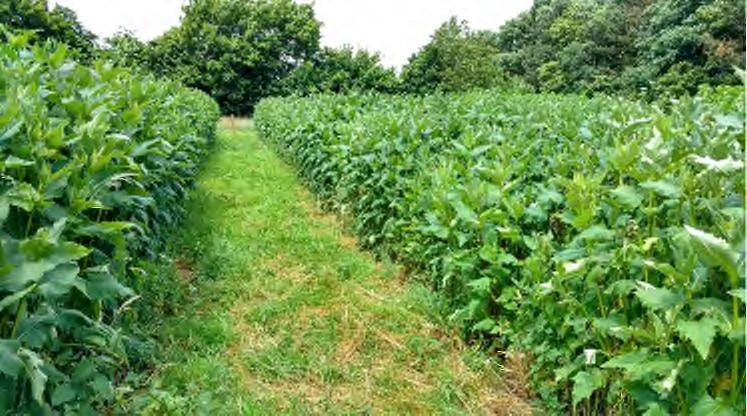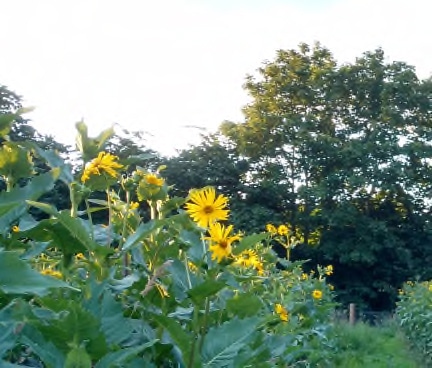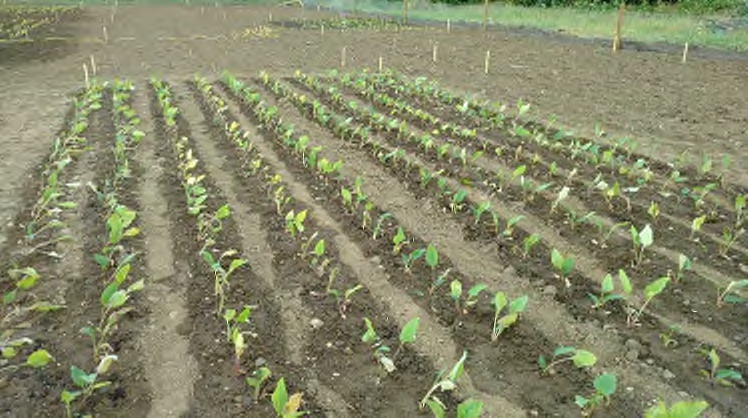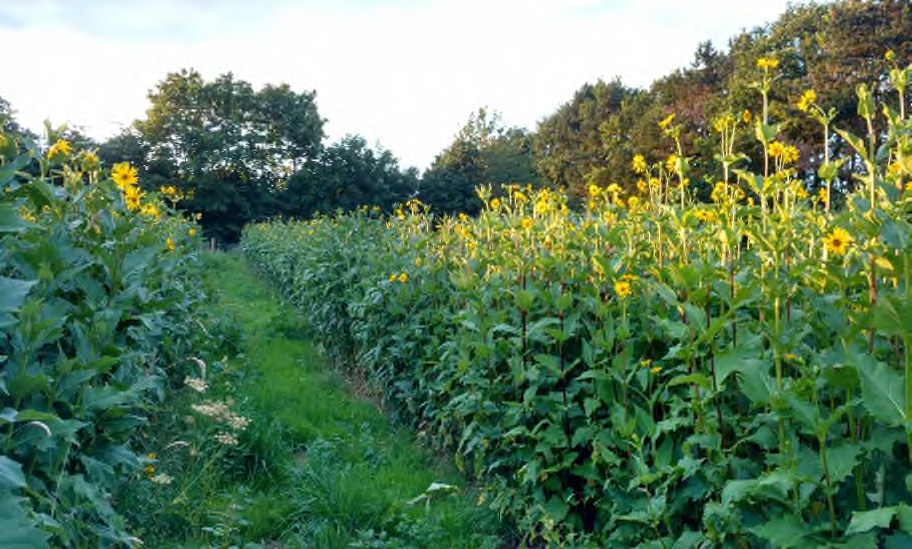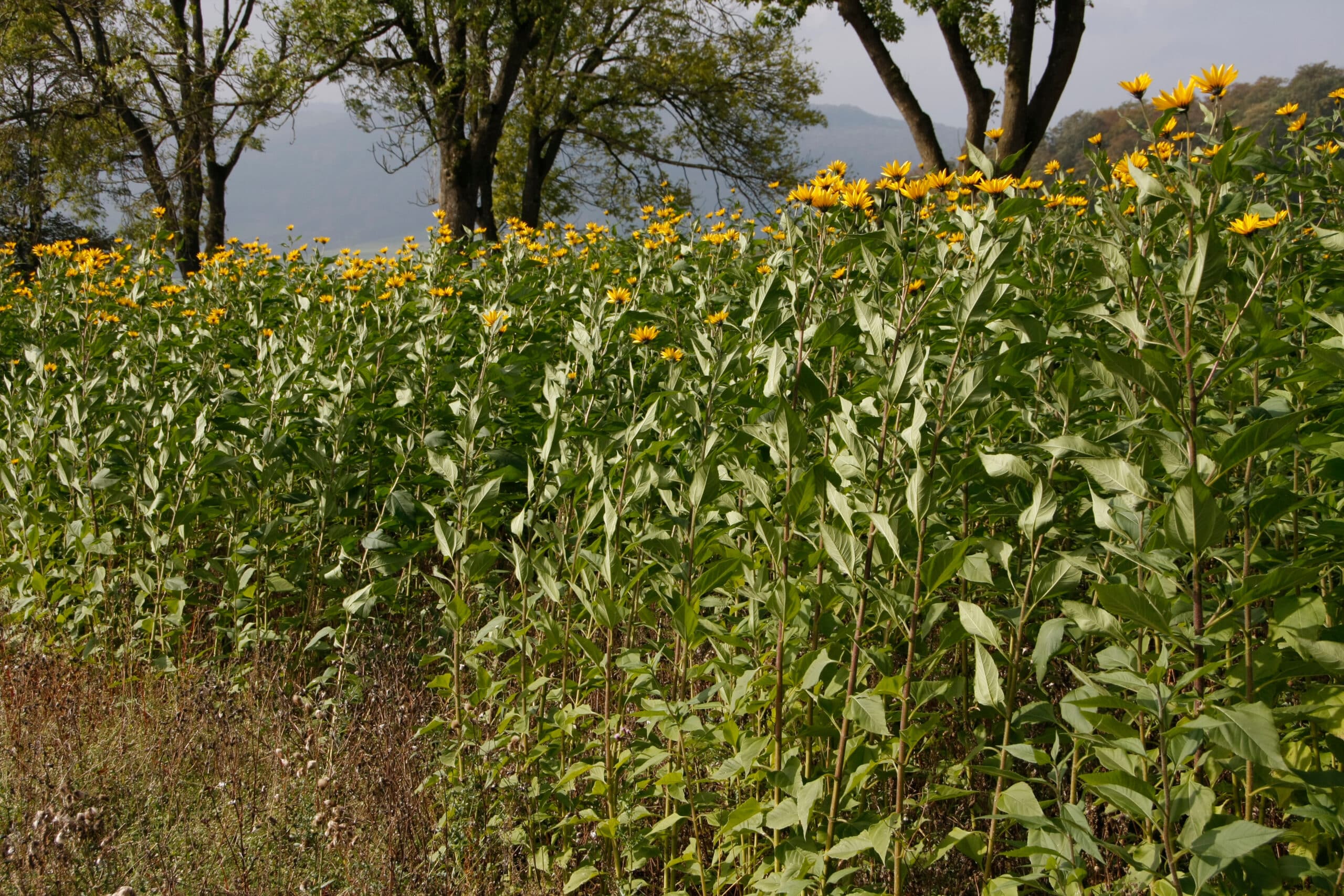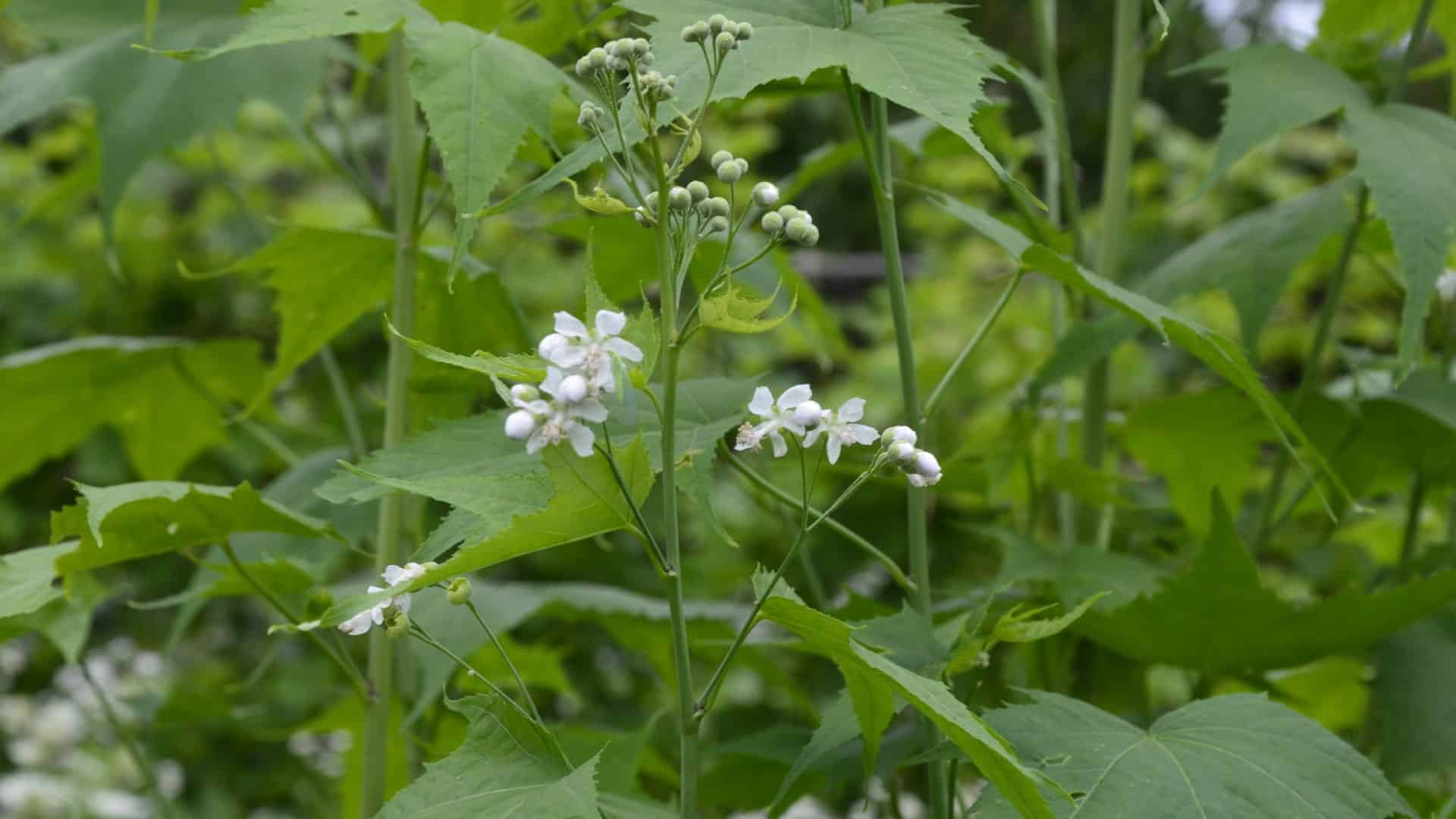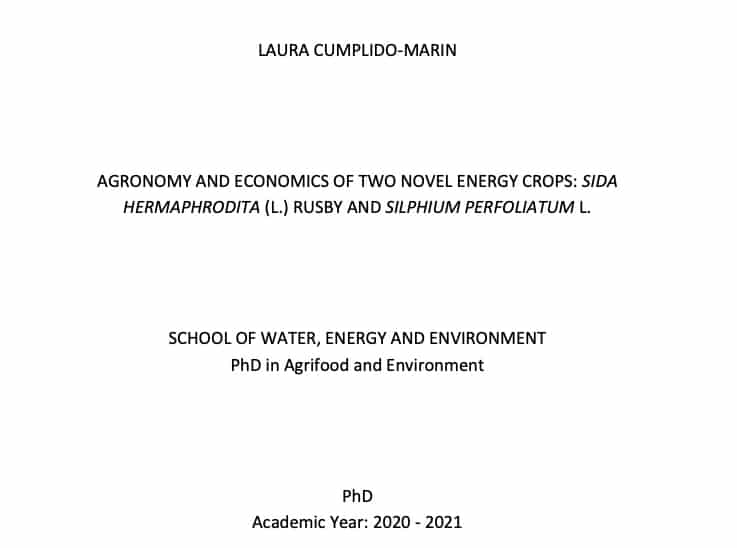Hemp
Cannabis sativa ssp.
General info
Hemp is one of the most ancient, domesticated crops in the world, originating from temperate Asia but now grown worldwide. It is an annual flowering forb with multiple varieties grown for fibre or seed, occasionally for both. Fibre varieties have the highest bulk biomass yield, reaching 2-3 m in height. Hybrid monoecious varieties have been developed, improving both ease of reproduction and uniformity of the plants for agricultural plantation purposes. Industrial hemp is defined as having less than 0.2% Tetrahydrocannabinol (THC) but can contain high levels of cannabidiol (CBD), an active ingredient that does not produce a “high”.
It is among the fastest growing plants on earth alongside bamboo. Whilst certain strains were bred for their high THC content (1–20%) and hallucinogenic properties, other varieties were bred for their excellent fibre potential. Alongside the well-known and well-studied medicinal benefits (reported health benefits of CBD compounds include anti-inflammatory and antioxidant properties), hemp seed has a high oil and protein content, whilst shiv and bast produce fibre, with numerous applications from pulp/papermaking to textiles and bio composites, insulation and building products.
Defra have identified hemp as suitable for diversifying UK agriculture, acknowledging environmental benefits include deep rooting, soil structure improvement, weed suppression, and contribution to net zero through locking up of hemp products in the building trade.
Cultivation and agronomy
Hemp is established by seed using conventional machinery suitable for planting. In the UK, this rapidly growing spring crop produces 7-15 tonnes of biomass per hectare, requiring only moderate nitrogen. Hemp has a water requirement of 250–700 mm during the growing period, and tolerates high temperatures with optimal growth occurring between 13-22°C. It is not very tolerant of water logging in the lower root zones. Hemp has a variety of self-protective properties, making it resistant to diseases and insect damage, reducing biocide requirements.
Harvesting depends on the purpose of the crop (fibre or seed). When grown for seed production, harvesting is conducted when the seeds are fully matured, and leaves are beginning to dry and turn yellow. For fibre production, harvesting is conducted when the plants reach their maximum height, and the lower leaves begin to yellow. Conventional harvesting equipment such as combine harvesters, sickle-bar mowers, handheld pruning shears may be used, depending on the scale of operation. Post-harvest separation and processing are also required to achieve the highest economic gain from the crop.
A home office licence is required to produce hemp fibre or obtain seeds for oils, covering both cultivation and possession of industrial hemp in the UK. Growers must also ensure they source seeds from EU/UK approved seed types with a THC content not exceeding 0.2%. Extraction of CBD compounds from field crops is not currently allowed. Relaxation of licencing restrictions could provide UK farmers with the opportunity of increasing the value of their crops.
Return to crops overview
Relevant research
Parvez, A. M., Lewis, J. D., & Afzal, M. T. (2021). Potential of industrial hemp (Cannabis sativa L.) for bioenergy production in Canada: Status, challenges and outlook. Renewable and Sustainable Energy Reviews, 141, 110784.
Fike, J. (2016). Industrial hemp: renewed opportunities for an ancient crop. Critical Reviews in Plant Sciences, 35(5-6), 406-424.
Das, L., Liu, E., Saeed, A., Williams, D. W., Hu, H., Li, C., … & Shi, J. (2017). Industrial hemp as a potential bioenergy crop in comparison with kenaf, switchgrass and biomass sorghum. Bioresource technology, 244, 641-649.
Additional Resources from Biomass Connect
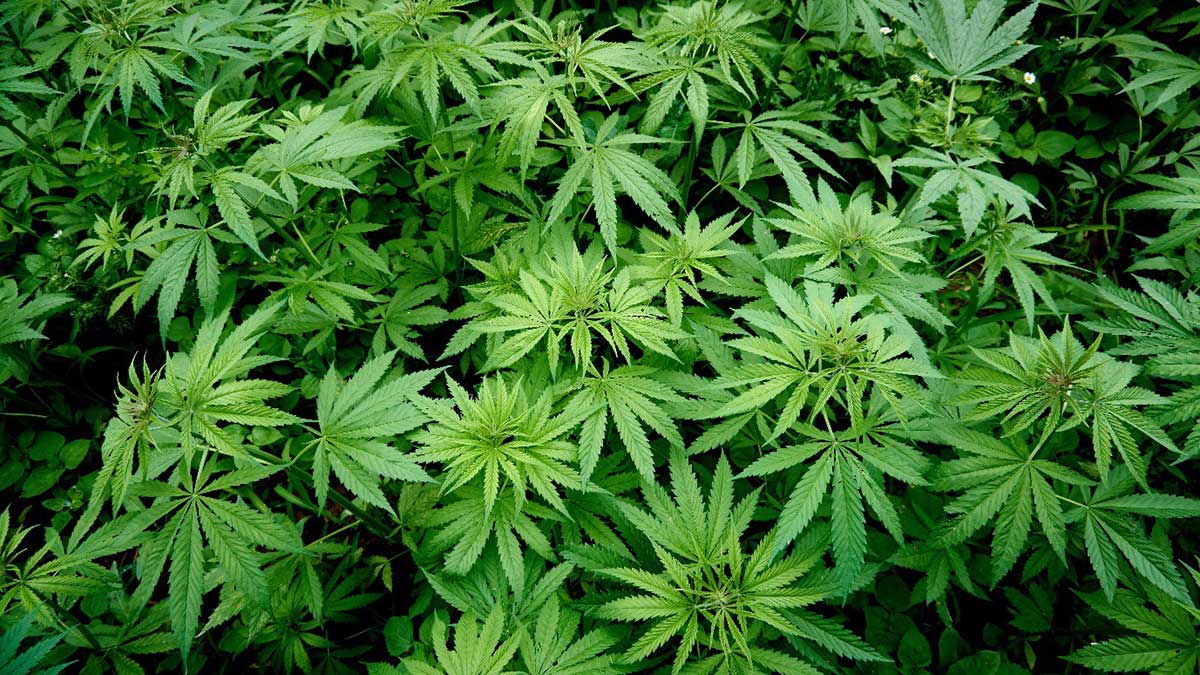
Read our Hemp as a Biomass Crop Technical Article
Cup Plant
Silphium perfoliatum
General info
Native to the North American prairies (Centre and East of USA and Canada), S. perfoliatum has spread all around the world, being extensively grown for forage in China (Zhang et al., 2010). Of a lush foliage and yellow flowers, it is an attractive decorative plant, reason it was brought to Europe in the 18th century (Kowalski and Kȩdzia, 2007). This species is known for its fast development, production of high annual yields, great tolerance to adverse situations, copious seeding, and straightforward cultivation in general (Zhang et al., 2010).
Part of the daisies family (Compositae/Asteraceae), S. perfoliatum can reach heights of up to 4m tall. On the base, leaves have a chordate to triangular shape, growing alternate. On the stem, coarsely toothed leaves grow opposite, are connate-perfoliate, and have a triangular to ovate shape. Yellow flowers bloom from July to September (Gansberger, et al., 2015).
Cultivation and agronomy
It prospers in riparian woods and edges, as well as abandoned farmland. S. perfoliatum can be established both from seeds (2.0-2.5 kg/ha) and seedlings (40,000 seedlings per ha), it prefers partially sunny to sunny locations, receiving a minimum 400-500mm of precipitation per season. Optimum fertilisation has been estimated to 120-90-90 NPK but it can also be grown without the application of any fertiliser, producing lower yields. Mechanical weeding during the first two years of growth is essential and afterwards advised. During the first year of growth, S. perfoliatum only develops a rosette of leaves on the ground. Harvest can begin on the second year of cultivation and should be done in summer when DM yields are about 30%, often using a maize harvester. Single and double harvests are possible, potentially increasing yields with the latter. Average mature dry matter yields are in the range of 16 t DM ha-1, remaining in full production for 15 years.
Uses
Currently, S. perfoliatum is mainly used as feedstock in anaerobic digestion systems and as forage for cattle. Green biomass is often ensiled to maximise biogas production. Methane yields vary between 227-315 dm3 kg oDM (Haag et al., 2015; Schittenhelm et al., 2016). Alternative uses of S. perfoliatum include forage and fibre, bioremediation, production of an array of essential ingredients for the chemical, pharmaceutical, agrochemical, and food industries. S. perfoliatum promotes a rich-in-biodiversity habitat both above and below ground, supports pollinators with pollen and nectar during a long blossoming season, can contribute to soil health regulation, and carbon sequestration.
Additional Resources
Read the ‘practioner leaflet‘ on Cup Plant kindly shared with us by author Laura Cumplido-Marin of Cranfield University.
Return to crops overview
Author
Laura Cumplido-Marin BSc MSc MEng PhD IAgrE
Research Fellow in Digital Agriculture
School of Water, Energy and Environment, Cranfield University
Relevant research
Laura Cumplido-Marin et al (2020) Two Novel Energy Crops: Sida hermaphrodita (L.) Rusby and Silphium perfoliatum L.—State of Knowledge. Agronomy, 10(7), 928;
Laura Cumplido-Marin, Paul J. Burgess, Gianni Facciotto Domenico Coaloa, Christopher Morhart, Marek Bury, Pierluigi Paris, Michael Nahm, Anil R. Graves (2022) Comparative economics of Sida hermaphrodita (L.) Rusby and Silphium perfoliatum L. as bioenergy crops in Europe. Energy Nexus Volume 6, 16
Laura Cumplido-Marin, Anil R. Graves, Paul J. Burgess, Adrian Williams (2022) On-farm greenhouse gas emissions associated with the cultivation of two new bioenergy crops in the UK. Energy Nexus Volume 8
Biomass Connect Trials
Cup Plant currently being grown as part of the Biomass Connect trials at the following hub sites:
Sida
Sida hermaphrodita
General info
S. hermaphrodita is a perennial herbaceous forb species native to the eastern United States. It is neither a grass nor a short rotation woody crop, instead it can be defined as a soft woody herbaceous energy crop. The species was introduced from the USA to Europe in the 1930s and was initially trialled as a fodder and fibre plant due to its favourable proteins, amino acids, vitamin C, carotene and other important elements (similar to alfalfa).
More modern breeds have been developed to grow to larger heights than wildtype variants, with up to 4m heights achievable within 4 months in East European studies. It is often cultivated from seeds and subsequently shoots emerge year on year from belowground rhizome structures. The species are known for a deep penetrating root system allowing exploitation of significantly deep levels of soil nutrients and water.
Cultivation and agronomy
In Central and East European research climates, growth of S. hermaphrodita has indicated the potential to harvest 9–17 oven dried tonnes ha-1 yr-1 for crops established from seeds or 20 oven dried tonnes ha-1 yr-1 from root cutting established crops. It has an energy profile comparable to Arundo, switchgrass, poplar and willow at 18.75 MJ Kg-1 and continues to produce biomass at equivalent levels for up to 24 years. Though actual biomass yields achieved are heavily influence by environment and specific management conditions on cultivation.
This harvested biomass is favourable because it is very easily granulated, meaning there is minimal energy consideration associated with the drying process for the production of pellets and briquettes compared to many other bioenergy crops.
This species is adaptable to a range of soil conditions but grows best under wet soils. Despite this, in direct comparison with Salix spp. for example, it is far less susceptible to yield impacts relating to lower moisture and rainfall. These properties make it another bioenergy crop with high potential for utilisation in marginal soils to avoid food production competition (though it is noted to achieve sufficient above ground biomass for efficiency to other crops, fertilisation may be required).
It has been demonstrated in a 6-year study that different dressing of S. hermaphrodita seeds can have significant impacts on subsequent years’ cultivation biomass yields. Stalk bending issues have been observed due to both fungal infections and high wind loads on this species potentially impacting biomass production. Trials to investigate planting densities for agricultural bioenergy planting of this species are currently limited but, in those that have been performed, 4 plants per m2 demonstrated the best 3-year returns with regards to tonnes of dry mater ha-1 despite individual year benefits to some of the lower plantation densities.
A key cultivation consideration for this species is the suppression of weeds via herbicides in the establishment period, which may require subsequent research into more environmentally considerate weeding strategies in future. One suggested application in this direction is initial intercropping with legumes to outcompete weeds, whilst also supplying N to the soil for S. hermaphrodita benefit and to prevent some levels of evaporation to provide more moist soils as desired in years of low precipitation. S. hermaphrodita can easily be harvested, with crop choppers as applied to maize, meaning bespoke machinery is not an issue.
Return to crops overview
Relevant research
Borkowska, H., & Molas, R. (2012). Two extremely different crops, Salix and Sida, as sources of renewable bioenergy. Biomass and Bioenergy, 36, 234-240.
Jablonowski, N. D., Kollmann, T., Meiller, M., Dohrn, M., Müller, M., Nabel, M., … & Schrey, S. D. (2020). Full assessment of Sida (Sida hermaphrodita) biomass as a solid fuel. Gcb Bioenergy, 12(8), 618-635.
Nabel, M., Schrey, S. D., Temperton, V. M., Harrison, L., & Jablonowski, N. D. (2018). Legume intercropping with the bioenergy crop Sida hermaphrodita on marginal soil. Frontiers in plant science, 9, 905.
Additional Resources
Read the ‘practioner leaflet‘ on Sida kindly shared with us by author Laura Crumplido-Marin of Cranfield University.
You can also read Laura Cumplido-Marin’s PhD Thesis: Agronomy and economics of two novel energy crops: Sida Hermaphrodita (L.) Rusby and Silphium Perfoilatum L.
